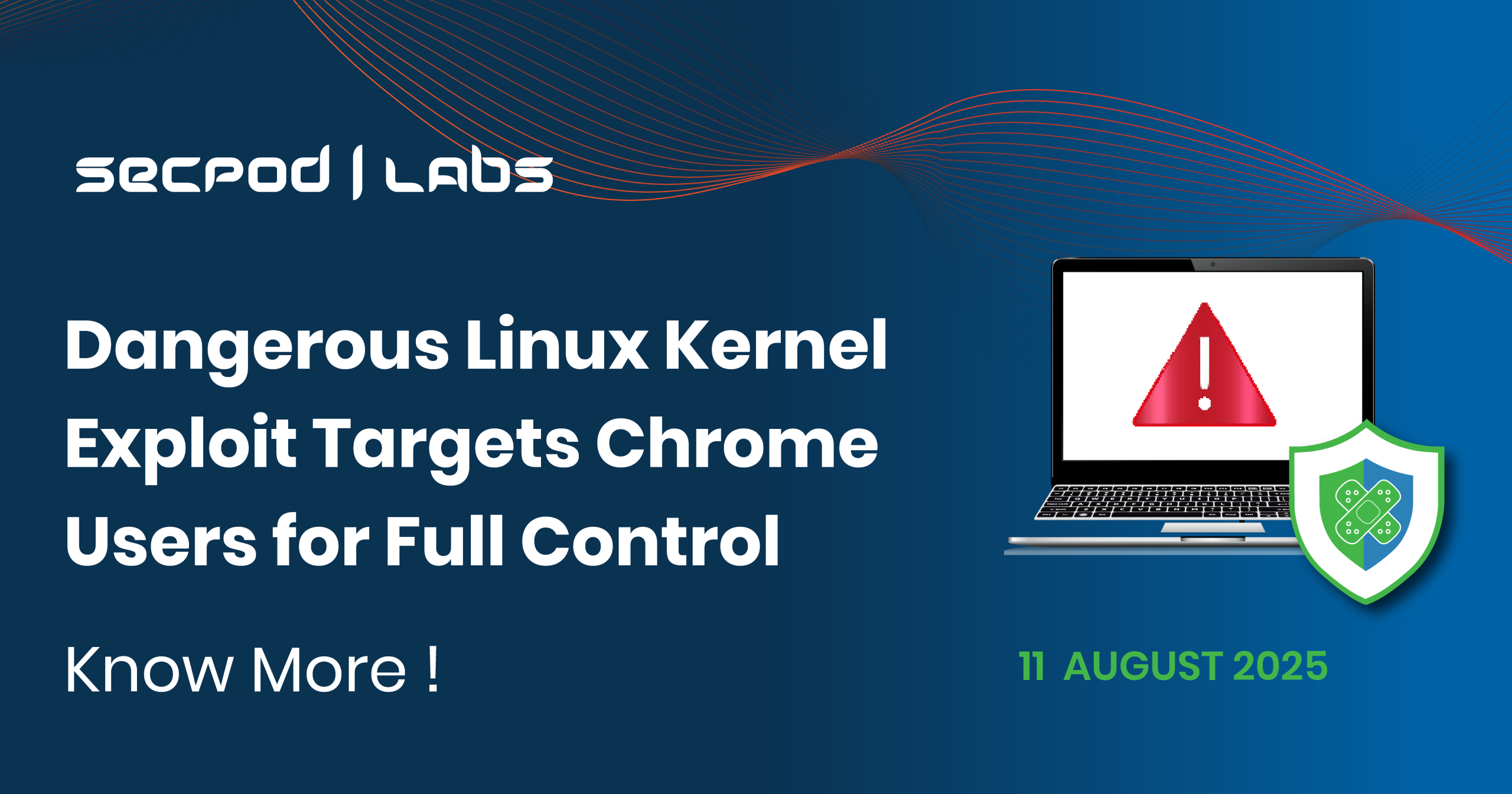Executive Summary
A critical vulnerability in the Linux kernel, identified as CVE-2025-38236, enables attackers to escalate privileges from the Chrome renderer sandbox to full kernel-level control on affected Linux systems. Immediate patching is essential, as successful exploitation grants attackers complete control over the operating system’s core.
Background on Linux Kernel
The Linux kernel is the core component of the Linux operating system, responsible for managing hardware, processes, memory, and system calls. Given its role as the foundation for countless servers, desktops, and embedded systems worldwide, any privilege escalation vulnerability in the kernel poses a severe risk to both enterprise and consumer environments.
Vulnerability Details
- CVE-ID: CVE-2025-38236
- CVSS Score(v3.1): 7.3
- Vulnerability Type: Use-After-Free (UAF) in UNIX domain sockets
- Affected Software: Linux kernel versions 6.9 and above
- Introduced in: Linux 5.15 (2021) via MSG_OOB feature
- Discovery: Jann Horn, Google Project Zero
The flaw is triggered by a specific sequence of socket operations exploiting the MSG_OOB (out-of-band) functionality, resulting in a use-after-free condition. This allows attackers to manipulate kernel memory and gain elevated privileges, even bypassing usercopy hardening protections.
Infection / Exploitation Method
- Initial Access: Attackers begin within the Chrome renderer sandbox, potentially via drive-by compromise or malicious web content.
- Triggering Vulnerability: A crafted set of socket operations is used to exploit the MSG_OOB bug in UNIX domain sockets.
- Kernel Memory Manipulation: Exploiting the UAF condition, attackers gain the ability to copy arbitrary kernel memory into user space.
- Privilege Escalation: Kernel-level privileges are obtained, bypassing sandbox restrictions.
- Full System Control: With root-level access, attackers can disable security tools, implant backdoors, and move laterally within networks.
Malicious Capabilities Enabled by Exploit
- Complete System Takeover: Full kernel-level execution privileges.
- Security Bypass: Ability to disable or impair defenses.
- Arbitrary Memory Access: Read/write kernel memory directly from user space.
- Lateral Movement: Extend compromise beyond the initial system.
Techniques Include
- TA0001 – Initial Access: The vulnerability can be exploited from the Chrome renderer sandbox, representing an initial access point. This could involve techniques like T1189 – Drive-by Compromise.
- TA0004 – Privilege Escalation: By exploiting the UAF condition, attackers can escalate privileges from the Chrome renderer sandbox to full kernel-level control. This aligns with T1068 – Exploitation for Privilege Escalation.
- TA0005 – Defense Evasion: Attackers can bypass usercopy hardening restrictions to copy arbitrary kernel memory to user space. This can involve T1562.001 – Impair Defenses: Disable or Modify Tools, to weaken or disable security tools.
Impact
- Remote privilege escalation from a browser sandbox to full kernel control.
- Unauthorized access to sensitive system and application data.
- Potential lateral movement into other systems on the network.
- Disabling endpoint protection mechanisms.
Mitigation Steps
- Patch Kernel: Upgrade to the latest Linux kernel release containing the fix.
- Browser Security Updates: Chrome has already blocked MSG_OOB messages—ensure you are running the latest version.
- Limit Attack Surface: Disable unnecessary kernel features, especially obscure or little-used ones.
- Threat Hunting:
- Monitor for unusual socket operations involving MSG_OOB.
- Detect unauthorized attempts to copy kernel memory into user space.
- User Awareness: Educate administrators and developers about risks tied to esoteric kernel features.
Instantly Fix Risks with Saner Patch Management
Saner Patch Management offers a continuous, automated solution to remediate vulnerabilities exploited in the wild. Supporting Windows, Linux, macOS, and over 550+ third-party applications, it enables safe testing environments before production deployment and supports patch rollback in case of failures.

